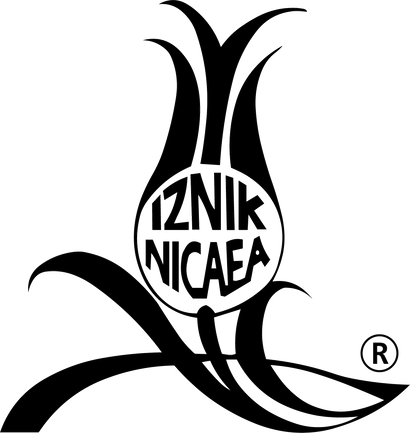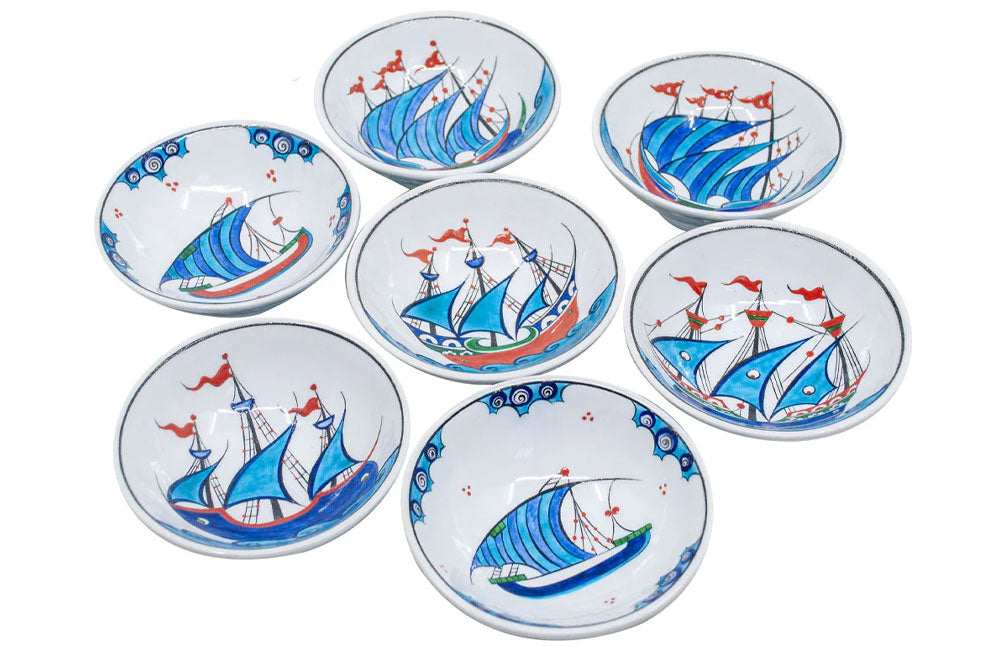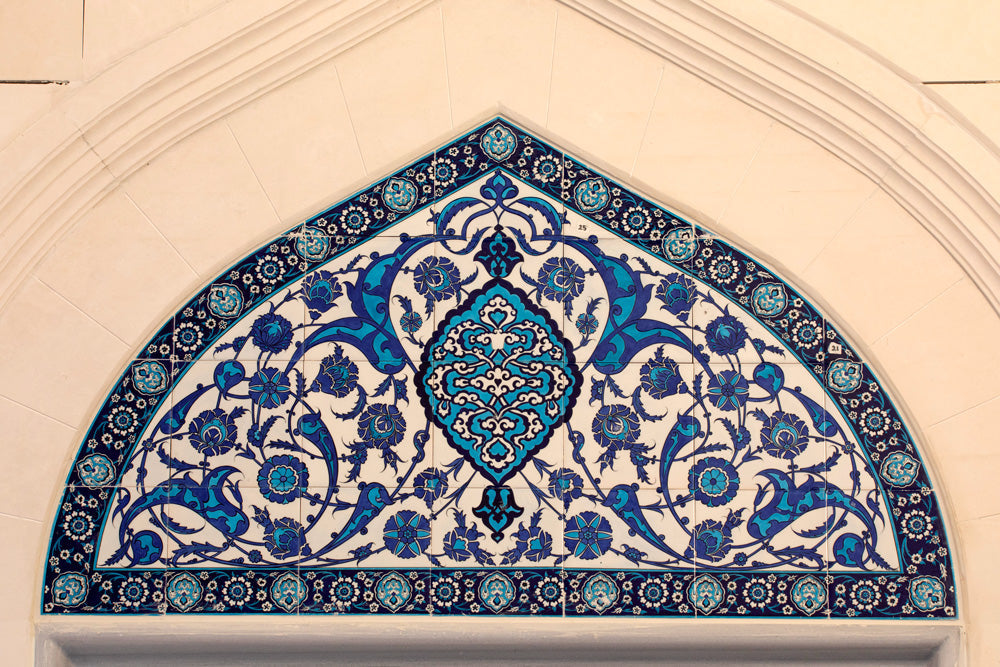Welcome to Iznik tile world
Welcome to Iznik tile world
Ottoman Tiles
August 23, 2017 4 min read

The Iznik tile, which exploded in the mid-nineteenth century, was inspired and controlled by court commissions. The main production center for underground painted tiles was Iznik, but the city of Kütahya began to develop in the seventeenth century. Many archival documents confirm the link between the Iznik workshops and the court, including complaints about the delays in deliveries to Iznik or the abuse of tiles sold to merchants rather than sold to capital.
Ceramicists working in Istanbul seem to have played an important role in the middle of the sixteenth century. The archival documents will become insignificant in the second half of the century while witnessing the existence of a certain number of tilemakers among the tradesmen directly connected to the court at that time (the Ahl-i hiref).
These masters produced both glaze painted and cuerda seca tiles. The cuerda Seca technique that emerged in Central Asia towards the end of the 14th century was used in the 15th century, at the monuments of early Ottoman art, with the intervention of its technicians trained at the Timurid court. Soon after Selim took over Tabriz, he saw a renewed favorable reputation once again emphasized by the masters that Iran had left. These cuerda Seca designs are a group supervised by a certain Habib of Tabriz and then a group named by the successor Usta Ali in the archives of Topkapi Palace. This technique, which is found in many buildings in Istanbul, provided the highest level of perfection with the interior decoration of the tomb of Sehzade Mehmet (1445-48). Shortly after this tomb decoration was made, it was removed from the mold and moved through the glaze with painted patterns. The Rock Dome in Jerusalem was the last major building project to characterize it.
The same ceramist group in Istanbul may have made six glazed ceramics to decorate the pavilions built in the Topkapi Palace. The most notable achievements attributed to these workshops are two monumental plaques, a scene of a reed full of magnificent animals revived on the face of the Sunnah Odasi in the seventeenth century. The coloring is still limited to cobalt blue and turquoise here and simultaneously coincides with that of the Iznik ceramic ware.
Ottoman Empire Ceramics
The golden age of Iznik ceramic goods has undergone a very formal evolution throughout the nineteenth century and has begun to diversify the decorative repertoire with the decreasing tendency from the beginning of the seventeenth century. Despite the lack of dated artworks, art historians have combined the relative chronology of evolution in the Iznik ceramics to limit the appearance of stylistic stages and the emergence of certain forms.
Between 1480 and 1520, cobalt blue is used mainly in decorative colors and different concentrations of the same pigment to achieve many pigment concentrations. This first phase was dominated by the combination of stylized vegetal forms unique to the Islamic repertoire called the Rumi to the Greek Seljuks and the flower motifs (Chinese Ottoman Hatay), also known as hatayi, inspired by Chinese art.
Copper oxides were associated with cobalt blue towards the end of the turquoise 1520s. With the diversification of the Iznik ceramics repertoire, a number of styles would coexist between the years 1530-40: the tugrakes spiral style inspired by the illuminations of the imperial monograms; "The style of the potters" containing new features such as a new flower-based record; Or a series of tracks with one or more degrees of reputation that imitate Chinese models. This wave of Chinese inspiration is evident in the emergence of three grape grapes, a bouquet of lotus, and a spiral scroll of flowers with reserves in the center of the food that will be constantly reinterpreted for decades to come. While Safavid ceramicists gladly accept the figurative animal repertoire or landscape elements in the genre stages of Chinese ceramic products, the Ottoman ceramics have come up with composition plans and a series of domestic motifs, wave boundaries, meander lines, rosettes, lotus leaves, They have proposed.
In the 1540s, the color palette of the Iznik ceramics was enriched markedly with a green that ranged from acacia to olive (probably introduced in 1530) and a green manganese oxide-based aubergine. This color scheme is sometimes called "Damascene" because it is similar to the color schemes found in tiles and cups produced in Damascus during the Ottoman period. In this first multicolor phase, the effect of sash drawings can be seen more clearly. This style, which is Tabriz's unique designer and employed in the courts since 1525, found the best expression in ink drawings in ink drawings, including composite flowers and highly complicated versions of Chinese artistic lotus flowers and peonies. The long serrated leaves, known as long-curved daggers, resemble a dagger (Turkish dagger). The lilies, carnations, hyacinths, and violets, which are highly valued by the Ottoman elite for their passion for horticulture, are slowly being used to enrich their compositions.
Also in News
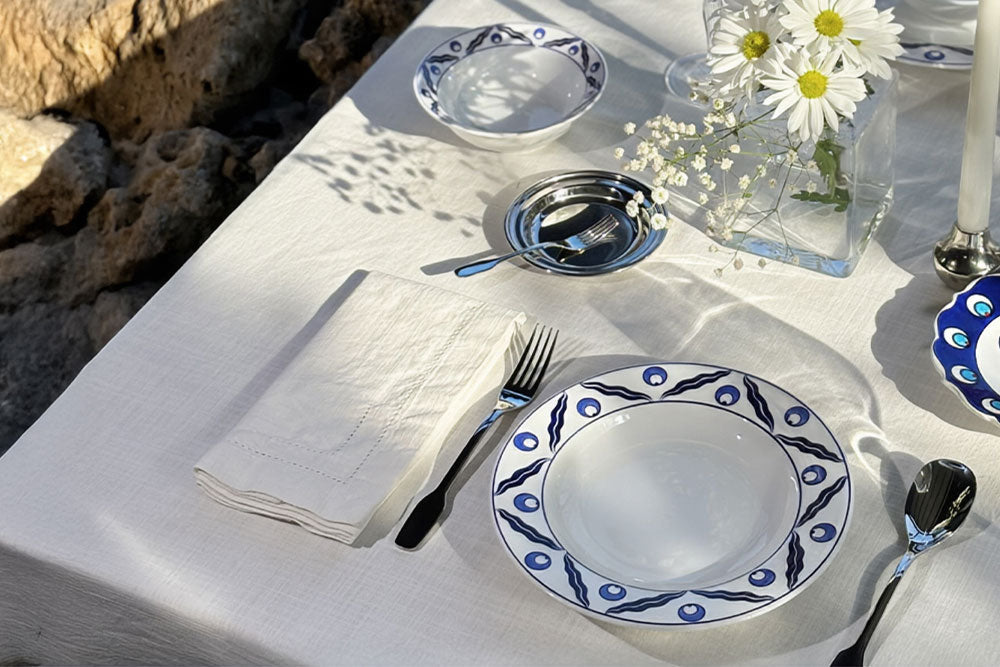
Rediscovering Timeless Beauty: Handcrafted Iznik Ceramic Dinnerware for the Modern Table
April 08, 2025 2 min read
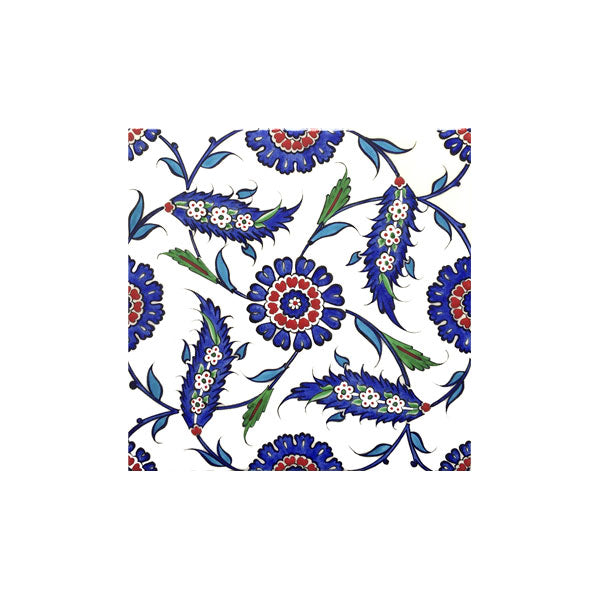
Thank you for being here!
Join us to discover the latest in Iznik tiles, enjoy special offers, and celebrate the beauty of Turkish artistry together.
